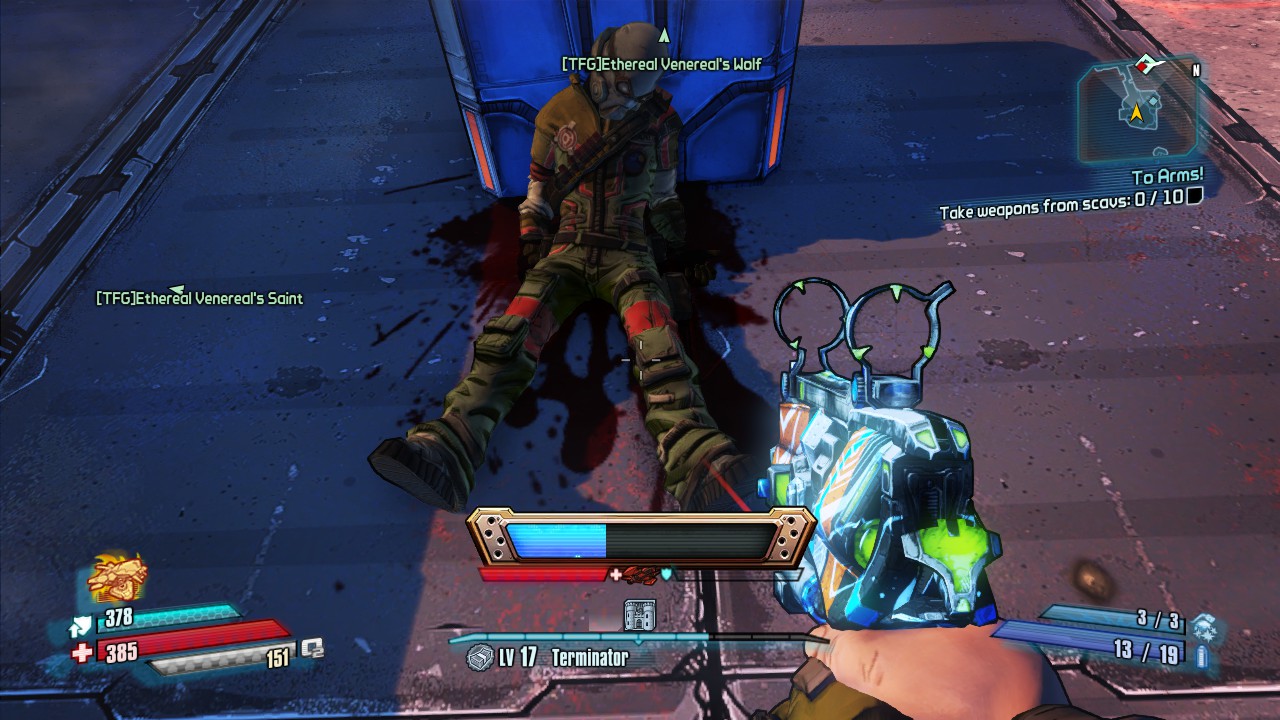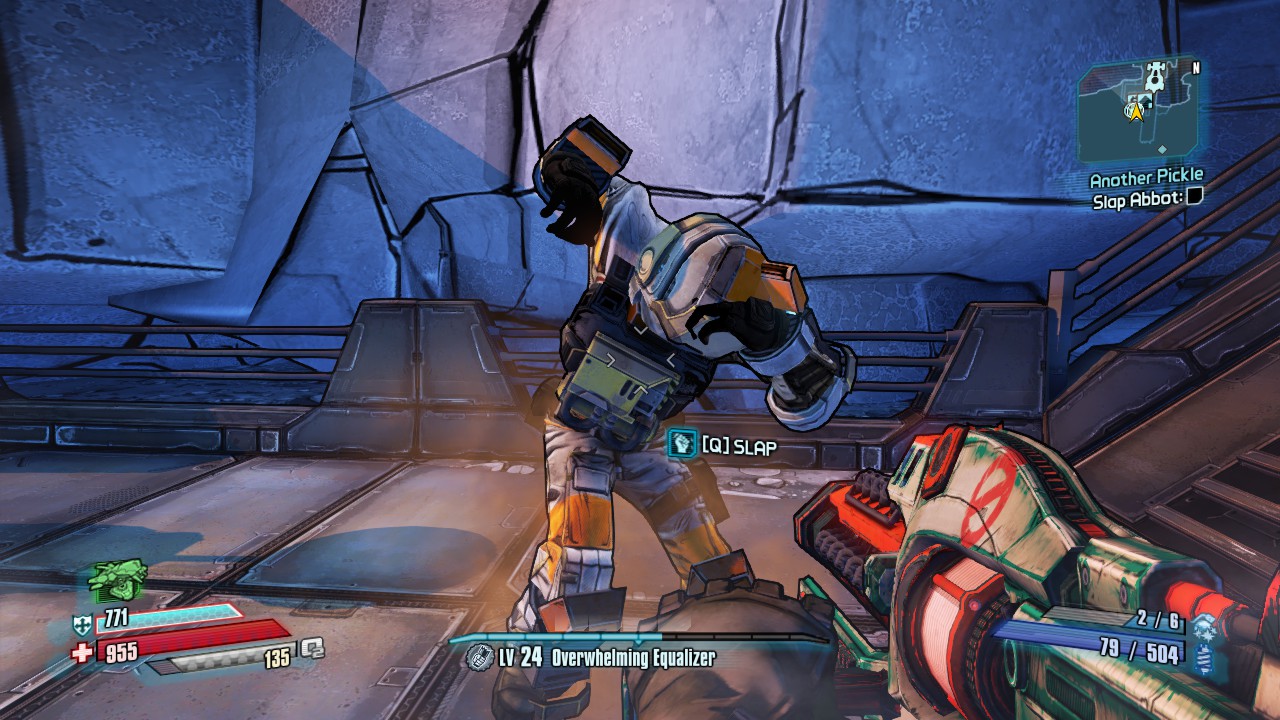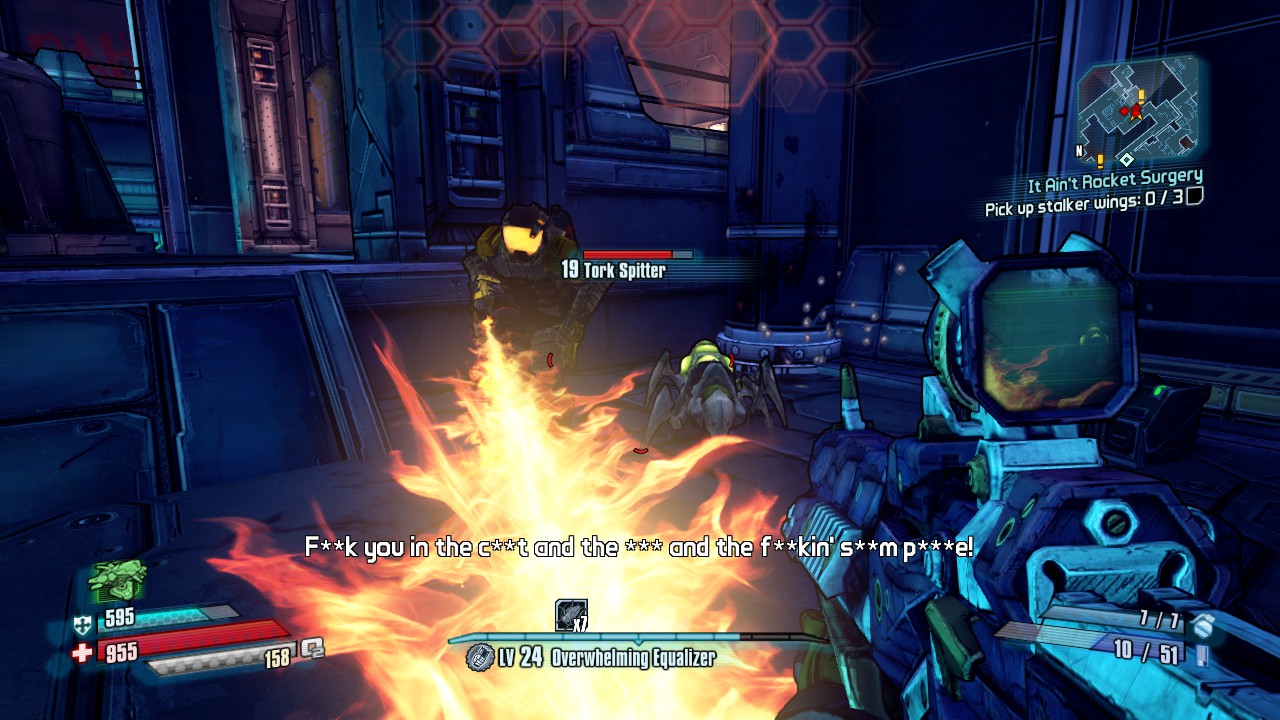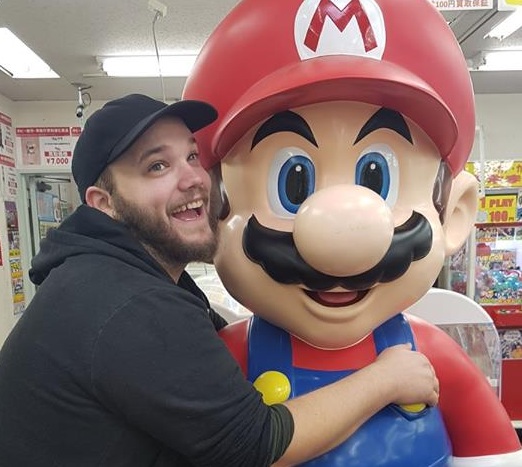
I love the Borderlands universe: It’s crazy, intense and unrealistic, all at once – although, sometimes, it can get really real, really fast too. It’s a universe where weapons manufacturers can also run themselves as private militaries, preteens can be criminal masterminds, and neither are beholden to laws of any kind (apparently.) The planet of Pandora is a hilarious enigma to be sure, but, as we learned at the end of the second game, the universe in which it exists is… Expansive. Whenever new Borderlands content comes out, I’m eager to see what details I can glean from it and Borderlands: The Pre-Sequel (TPS) scratched that itch. It scratched it long and hard and with an Aussie twist. While not quite as long as Borderlands 2, TPS is most definitely a full game in its own right and is a fantastic contribution to the series, despite some technical and design issues.

The game takes place across the Hyperion Helios Space Station, which is still under construction, and the lunar surface of Pandora’s moon Elpis. You take the role of a vault hunter responding to a call for assistance from none other than Handsome Jack, lowly Hyperion engineer who has been (probably mistakenly) put in charge of overseeing Helios’ construction. The station is attacked by a fleet of Dahl warships, forcing you down to the lunar surface and beginning you on the dark path which leads to the events of Borderlands 2. Aside from the details revealed via the main story about the first two games, TPS also provides greater context to the Borderlands universe in general.
The nature of the Borderlands corporations, specifically Hyperion and Dahl, is explored with much more detail this time around. Long time fans of the series with burning questions will finally have some answers, and some even more confusing questions to replace them. Player character development, especially, has received a huge improvement, with NPC dialogue and reactions varying based on who you’re playing with and having your character respond in kind. An example of this is the ECHO transmissions throughout the game, with player characters giving context specific dialogue when communicating with NPC’s. The result is a feeling that your character is more involved with the events of the story, as opposed to being the arbitrary, death-dealing watcher from the previous games.

No, no, Claptrap, sshh, sssshh, ssssssshhhut the f*** up.
The best part of TPS’ story, at least from my perspective, was the distinctly Australian flavor throughout. Being developed by 2K Australia, many of the voice roles have (naturally) been filled by Australians. Rather than awkwardly shoe-horning them into the game, however, alien amongst a sea of Americans, TPS owns it and has made the denizens of Elpis pretty f***ing ocker. There are a lot of cultural sayings, colloquialisms and in-jokes that will likely fly right over the heads of non-Australians. I’m happy to say that Australian stereotypes (which, aside from the sci-fi theme, are accurately and lovingly recreated in-game) fit in perfectly to the Borderlands world without missing a beat.
My biggest gripe with TPS’ story, however, is one that I’ve had with all Borderlands games, which is that the pacing throughout the game is sporadic at best. Accepting multiple side missions at once means that you run the risk of having ECHO recordings and transmissions cutting one another off. This usually results in a lot of idle standing around to listen to the transmission out of fear that you might accidentally skip something. There’s also a huge amount of side quests which, while entertaining, often have little to nothing to do with the main plot. Completing at least a decent portion of them is essential to leveling high enough for the end game, however, and it creates an awful lot of stop-starting to the main story. Unless you want to do a lot of die-respawning later in the game, that is.

This guy would have fared better against the final boss than I did during my first attempt.
Borderlands: TPS wasn’t trying to revolutionise the formula of the series and so there isn’t a huge amount which is different between this game and its predecessors. This is far from a bad thing as the loot and shoot design that the series is known for is still present at the game’s core and is just as rad. The addition of O2 adds low-grav physics to the fray, allowing players to fly through the air while they perforate their enemies and dive down for a butt-slam. As always, the O2 units come in all sorts of colors and elemental flavors and make for an enjoyable addition to your arsenal. They’ve also thrown in some new weapon types, including laser guns and cryo ammo, which add to the series’ ever-lengthening list of ways to blow shit up.
While the boosting is a great idea, the majority of the game hasn’t really been adjusted to allow for it. There are still a lot of narrow corridors littered with obstacles on the ground that make navigating them in low-grav an absolute pain. TPS also takes notes heavily from the previous games’ level design, with large, flat, expansive areas between specific locations. The gaps and ravines which are dotted around the landscapes quite often have insta-gibbing terrain filling the void that you will absolutely fall into, at least on the first few attempts. Your O2 pack only has enough boost to get across from a particular point and that’s assuming you actually want to jump across. Ridges which line these gaps look the same as the ones which also randomly jut from perfectly safe ground and getting them mixed up is incredibly easy. For the first few hours, you’ll be flying off of cliffs and into oblivion until you’ve memorised the map layout.

ONWARD INTO OBLIVION!
The quests in the Borderlands series have historically been fetch-heavy and TPS is no exception to that. In fact, were it not for the great writing and dialogue which accompanies all of these quests then they would be the most annoying part of the game. Many require you to travel back and forth across the expansive areas multiple times, which only provides ample opportunities for you to accidentally trigger other quests you have picked up. Since you can only highlight one quest at a time as well, it isn’t easy to avoid these situations without your finger constantly twitching to the quest log button.
Playing the game was still definitely a blast and as fun as you’d expect a Borderlands game to be; however, there were some kinks which definitely stood out. The low-grav physics is fun for fighting and never really got old, though it made the controls feel far too floaty for the rest of the game. Boosting and high-jumping allows me to climb all over terrain and buildings, allowing for more exploration of the terrain and use of alternate paths. Frustratingly often, however, the “invisible walls”, which are fairly typical of Borderlands’ level design, crop up and in the most ridiculous of places. Like the roofs of buildings which only allow you to walk along the edges; un-jumpable ridges that are five feet high and in totally open ground. Sometimes just open ground – patches of flat, even ground which will only allow you to pass if you’re jumping.

If it can grab me then it must be an enemy, but I’ve been shooting and shooting and it won’t die! WHY WON’T IT DIE!?
Glitches were pretty common during play as well; chain lightning would bug out, buzzing permanently on corpses and stretch on into infinity. It was pretty to look at and funny the first few times it happened, but it does frequently happen and the noise it creates is maddening. Occasionally, the ground would just be a rough guideline with objects and enemies alike standing or sitting on thin air several meters above me. There’ve always been similar bug problems in the previous games in the series, though this entry seems to be particularly bad. That being said, they’re not often game breaking and usually do more to add to the comedy of every moment than annoy me as a player.
The O2 system was an odd beast; it had its moments and a lot of potential, but didn’t seem to quite work with the level design. For starters, I ran out of oxygen maybe twice while playing. It was a surprise to me both times, taking only seconds to fix and with no consequences. Any health lost while out of O2 is immediately restored once you find some again and the stuff isn’t exactly in short supply. Oxygen vents from the ground all over the place, atmosphere generators are everywhere and just about every enemy drops oxygen canisters. The boost also didn’t provide enough upward momentum to jump from the ground onto roofs, or even upper-level ledges on buildings, without first jumping to something smaller. A problem, unfortunately, not shared by your enemies.

Though troubleshooting will usually solve the issue after awhile.
These problems rolled over into the shoot’n’loot gameplay a little but not enough to stop the game from being fun. Chasing enemies is a pain when they have better boosting and can easily get away from you, though the low-grav jumping helps to keep them within range and sight. You’ve otherwise got lasers, cryo ammo, butt-stomping and Stingrays as new additions to the already extensive number of options for combat. Stingrays are also the first vehicles in the Borderlands series to allow four to be spawned at once, finally putting an end to my constant need to berate my friends for being terrible drivers. For all the issues that I had with TPS’ O2 system, it was still a hell of a lot of fun to play and is worth sticking with until the end. Seriously. Dat boss fight and ending.
Elpis feels like a totally different world to Pandora, as previously mentioned, and its appearance goes a long way towards helping that. While it’s true that TPS uses a bunch of existing assets from its predecessor, that hasn’t stopped it from using them to great effect. The terrain appears much more barren than Pandora’s (if that can be believed) and anything colourful or vibrant is likely to kill you. Elpis hasn’t been terraformed and there’s no natural atmosphere, which means bunkers, oxygen field generators and supply crates litter the landscape every few hundred yards. Oh, then there’s also the fact that, due to some over-zealous mining operations, the moon is literally falling apart. The surface is cracking to expose its inner core, just, like, all over the place.

Oh my, yes…
Scavs, being among the most common enemies, have a drab and utilitarian look to them that steps away from the “tribal” look of Pandora’s bandits. The local wildlife looks terrifying and almost Lovecraftian at times. While this isn’t any different from other animals one encounters in this series, they’re still unique in comparison. The Dahl soldiers looked pretty great, as well, though that might have something to do with the fact that they’re miiiiighty similar 40K’s Space Marines. I can’t tell if it was done deliberately and intended as an homage or if someone on the design team borrowed a little too heavily. Regardless, the resemblance and similarities between the two are striking.
The dialogue and voice acting in TPS is hilarious and snappy (when the game plays it without issue), as I’ve come to expect from Borderlands in general. There’s always a few jokes which seem kind of lame, though the uniquely Australian approach to most of the games humor had me in stitches most of the time. As I mentioned earlier, the game has an issue with ECHO transmissions and general dialogue being cut off due to other events triggering. There’s no way to go back to hear them, either, and it can very easily happen during story critical sections (as it did for me a few times while playing.) Though when multiple things aren’t fighting for your auditory attention at once, the stuff you can focus on is pretty great.

Oh dear…
 Excellent story
Excellent story
 Interesting new mechanics
Interesting new mechanics
 Engaging gameplay
Engaging gameplay
 Great Australian vibe
Great Australian vibe
 More Claptrap
More Claptrap
 Sporadic story pacing
Sporadic story pacing
 Floaty controls
Floaty controls
 Invisible walls everywhere
Invisible walls everywhere
 Glitchy physics
Glitchy physics
 Constant dialogue interruptions
Constant dialogue interruptions
If I had to describe Borderlands: TPS as anything, I’d call it a “pleasant surprise.” I wasn’t expecting another Borderlands game of any kind so soon after 2, let alone one of this size or quality. The story, while still having a lot of the delivery issues from the previous games, was great to experience and actually made a solid contribution to the series’ lore. The new O2 system seems to have problems gelling with the existing design, and the world could have been designed with more forethought regarding the low-grav physics. That being said, it’s still a neat addition to the combat, just like the new ability to spawn four vehicles at once (albeit of only one type of vehicle.) Overall, the changes introduced weren’t amazing but they were entertaining, which is what you want in a pre-sequel. I think. If a game that’s not even quite a proper sequel can attempt to introduce new ideas, however small, it gives me high hopes for what the next full Borderlands game will be like.











